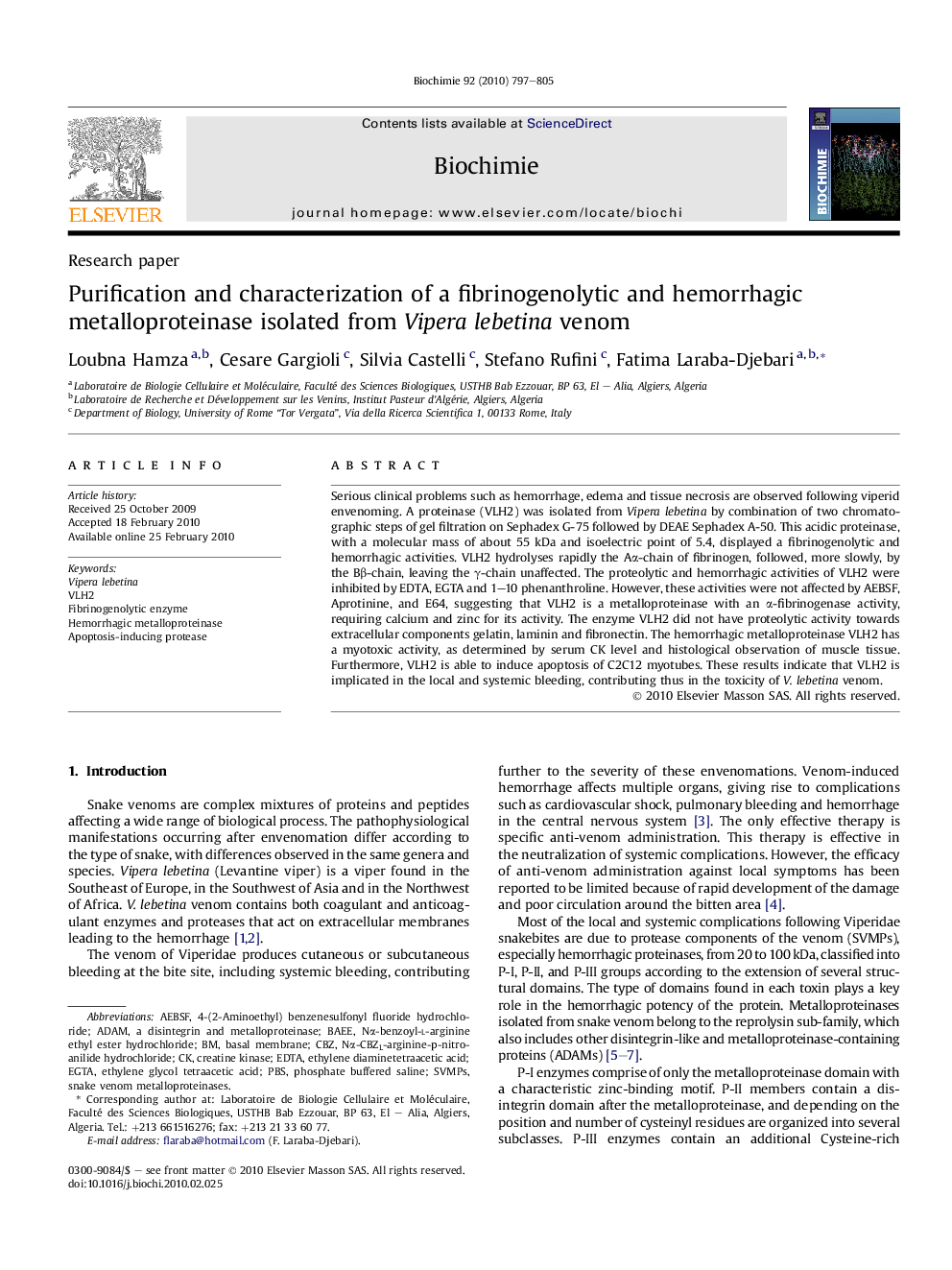| Article ID | Journal | Published Year | Pages | File Type |
|---|---|---|---|---|
| 1952754 | Biochimie | 2010 | 9 Pages |
Serious clinical problems such as hemorrhage, edema and tissue necrosis are observed following viperid envenoming. A proteinase (VLH2) was isolated from Vipera lebetina by combination of two chromatographic steps of gel filtration on Sephadex G-75 followed by DEAE Sephadex A-50. This acidic proteinase, with a molecular mass of about 55 kDa and isoelectric point of 5.4, displayed a fibrinogenolytic and hemorrhagic activities. VLH2 hydrolyses rapidly the Aα-chain of fibrinogen, followed, more slowly, by the Bβ-chain, leaving the γ-chain unaffected. The proteolytic and hemorrhagic activities of VLH2 were inhibited by EDTA, EGTA and 1–10 phenanthroline. However, these activities were not affected by AEBSF, Aprotinine, and E64, suggesting that VLH2 is a metalloproteinase with an α-fibrinogenase activity, requiring calcium and zinc for its activity. The enzyme VLH2 did not have proteolytic activity towards extracellular components gelatin, laminin and fibronectin. The hemorrhagic metalloproteinase VLH2 has a myotoxic activity, as determined by serum CK level and histological observation of muscle tissue. Furthermore, VLH2 is able to induce apoptosis of C2C12 myotubes. These results indicate that VLH2 is implicated in the local and systemic bleeding, contributing thus in the toxicity of V. lebetina venom.
